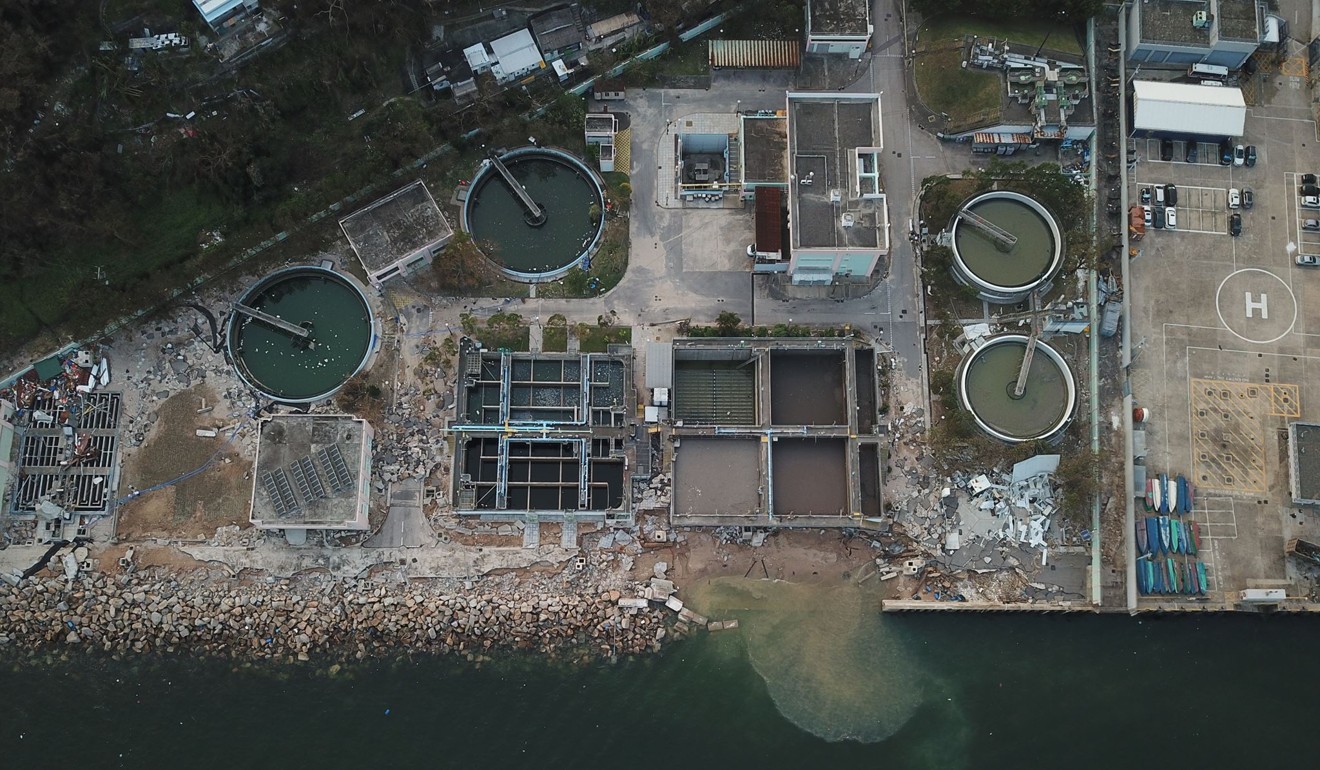
Hong Kong sewage treatment facility leaking waste into waters off Sai Kung after being damaged in Typhoon Mangkhut
Residents warned to avoid five beaches and environmentalists express serious concerns as officials say repairing the damage could take months
Sewage has been leaking into the sea in “Hong Kong’s back garden” of Sai Kung as a treatment facility there was damaged when Typhoon Mangkhut battered the city over the weekend, authorities warned on Thursday.
Elsewhere, three sections of water mains in Southern District on Hong Kong Island had also broken, leading to “the discharge of sewage”, according to officials.
While drainage officials said it could take months to repair the Sai Kung facility, they estimated they would need three weeks to fix the pipes in Southern District and warned the public to stay away from at least five of the beaches nearby for the meantime: the popular Deep Water Bay and Shek O in Southern District, and Kiu Tsui Beach, Hap Mun Beach and Trio Beach in Sai Kung.
The five beaches have been closed since Monday due to the need to clean up the debris and repair shark prevention nets after the typhoon.

Environmentalists warned of possible disaster to the marine life off Sai Kung if the problem lingers.
The announcement was made on Thursday after drainage officials had inspected the facilities after the typhoon.
At Sai Kung Sewage Treatment Works, officials found that some of the pipes and treatment facilities were so seriously damaged that the plant could only now maintain its “primary sewage treatment service”, which sees solid waste removed by filtering and removal of grit and a sedimentation process.
Tree expert asks Sha Tin residents to save Chinese banyan battered by Mangkhut
“As a temporary measure, an additional disinfection process has been arranged for the primary treated sewage being bypassed for nearshore discharge, so as to minimise the impact to nearby waters,” a government statement said on Thursday.
But it conceded the seawater quality in the vicinity would still deteriorate.

Commencing operation in 1988, the Sai Kung plant handles secondary sewage, with a daily treatment capacity of 8,000 cubic metres. It mainly serves the Sai Kung area. The treated waste is supposed to be discharged to Inner Port Shelter for dilution and dispersion.
The Drainage Services Department said it would build a temporary pipe in about one or two weeks to safely move some of the treated sewage.
Elsewhere on Hong Kong Island, three sections of pipe in Southern District, including a 450mm (18 inch) diameter pipe near Mills and Chung Path, a 150mm (6 inch) diameter pipe near Deep Water Bay barbecue area, and a 300mm (12 inch) diameter pipe near Shek O, were damaged during the typhoon.
This led to “the discharge of sewage”, according to the government statement.
A visit by a Post reporter to Shek O on Thursday afternoon found a notice warning the public about the sewage leak and saying the beach was closed for “maintenance of the shark prevention net”. But several people swimming in the sea said they had missed the warning.

Israeli tourist Amnon Barenboim, 36, was there with his girlfriend. “If I had heard the warning or some concern about the sewage spilling into the sea here, I wouldn’t have come here,” Barenboim said.
WWF-Hong Kong’s senior conservation officer, Angel Lam Yin-ha, feared the sewage would seriously affect the marine ecology.
“There is rich marine life and a coral reef off Kiu Tsui and Shelter Island. The organic contaminants that could flow into the sea could create red tides. Red tides can kill fish by depleting the oxygen in water. If the problem lingers, it can lead to serious consequences.”


